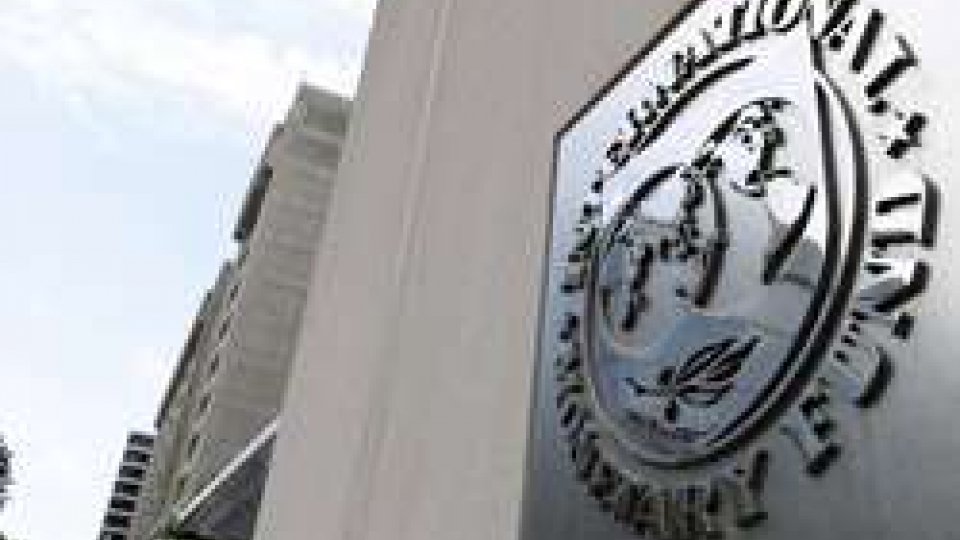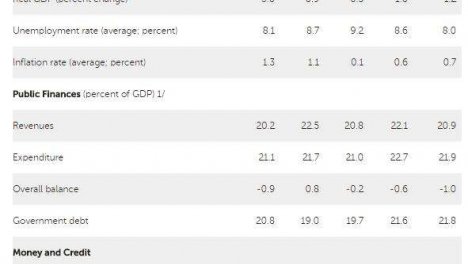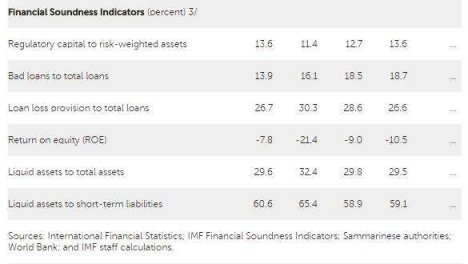
È stato pubblicato il rapporto conclusivo dell'ultima missione del fondo monetario internazionale in Repubblica. L'economia di San marino si sta riprendendo dopo una profonda recessione a seguito di una serie di choc finanziari. La crescita è prevista all'1% nel 2016. Contemporaneamente l'FMI ha registrato una contrazione della disoccupazione nell'anno appena passato. Il sistema bancario continua a fare i conti con il problema degli NPL. I direttori esecutivi – sottolinea l'organismo di Washington – sottolineano che una strategia credibile per Cassa di Risparmio debba basarsi sull'AQR e che ogni piano di ristrutturazione debba garantire una visione a lungo termine.
On April 3, 2017, the Executive Board of the International Monetary Fund (IMF) concluded the Article IV consultation [1] with the Republic of San Marino.
San Marino’s economy is slowly recovering after a deep recession following a series of financial sector shocks. Growth returned in 2015 and accelerated in 2016 to an estimated 1 percent, on the back of stronger domestic and external demand. Importantly, employment has been rising and the unemployment rate declined to 8.5 percent in December 2016.
Moderate growth is expected in the near and medium term. GDP growth is projected to reach 1.3 percent in the medium term, driven by continued expansion in non-financial industries and services. However, on current trends, the pace of growth would not be strong enough to bring output to precrisis levels over the next five years, while risks remain tilted to the downside.
Notwithstanding important recent initiatives to improve the business environment, challenges remain to diversify the economy beyond banking and support stronger growth. The banking system continues to face high nonperforming loans (NPLs), low provisions, and low profitability. While public debt and deficit have been relatively low, public finances have little space to respond to future shocks and mobilize resources for pro-growth policies, given limited buffers and no access to external financing.
Executive Board Assessment
Executive Directors welcomed the ongoing recovery in economic activity, but noted that the outlook remains challenging. To achieve more robust and sustained medium?term growth, Directors encouraged the authorities to press ahead with reforms to restore the health of the banking system, rebuild fiscal buffers, and diversify the economy beyond the financial sector.
Directors stressed the importance of rehabilitating the banking system and dealing with the very high stock of nonperforming loans. They welcomed the central bank’s initiative to carry out an Asset Quality Review (AQR), noting that it is an important step in the process of putting the banking system on a solid footing. In this regard, Directors endorsed a multifaceted approach, entailing repairing banks’ balance sheets based on the AQR results, and removing remaining obstacles to NPL resolution, including regulatory, tax, and legal reforms to significantly reduce NPLs over the medium term. They emphasized that a credible strategy for Cassa di Risparmio della Repubblica di San Marino (CRSM) should be guided by AQR findings, and any restructuring plans should ensure long?term viability. At the same time, Directors supported the need to strengthen bank oversight to mitigate future risks, including revamping supervision and developing a robust macroprudential framework.
Directors agreed that a gradual fiscal adjustment to rebuild buffers should start this year, targeting a modest surplus by 2019 to create space to respond to future shocks. They emphasized that tax policy measures, particularly the introduction of a VAT system, could play a key role in light of San Marino’s low revenue and high need for pro?growth spending. On the expenditure side, containing the public wage bill and reforming the pension system would also be important. Directors shared the view that access to external financing would help enhance the ability to respond to shocks, diversify funding sources, and break the bank?sovereign loop.
Directors supported continuing efforts to diversify the economy, improve the business environment, and increase labor market flexibility, which will help attract more investment and enhance growth potential. Long?term investments in education and vocational training were also encouraged. Directors welcomed the recently completed AML/CFT national risk assessment and encouraged the authorities to implement the AML/CFT Action Plan. While recognizing resource constraints, they encouraged the authorities to strengthen data provision to enhance transparency and facilitate more informed decision?making by households, businesses, and policy makers.
On April 3, 2017, the Executive Board of the International Monetary Fund (IMF) concluded the Article IV consultation [1] with the Republic of San Marino.
San Marino’s economy is slowly recovering after a deep recession following a series of financial sector shocks. Growth returned in 2015 and accelerated in 2016 to an estimated 1 percent, on the back of stronger domestic and external demand. Importantly, employment has been rising and the unemployment rate declined to 8.5 percent in December 2016.
Moderate growth is expected in the near and medium term. GDP growth is projected to reach 1.3 percent in the medium term, driven by continued expansion in non-financial industries and services. However, on current trends, the pace of growth would not be strong enough to bring output to precrisis levels over the next five years, while risks remain tilted to the downside.
Notwithstanding important recent initiatives to improve the business environment, challenges remain to diversify the economy beyond banking and support stronger growth. The banking system continues to face high nonperforming loans (NPLs), low provisions, and low profitability. While public debt and deficit have been relatively low, public finances have little space to respond to future shocks and mobilize resources for pro-growth policies, given limited buffers and no access to external financing.
Executive Board Assessment
Executive Directors welcomed the ongoing recovery in economic activity, but noted that the outlook remains challenging. To achieve more robust and sustained medium?term growth, Directors encouraged the authorities to press ahead with reforms to restore the health of the banking system, rebuild fiscal buffers, and diversify the economy beyond the financial sector.
Directors stressed the importance of rehabilitating the banking system and dealing with the very high stock of nonperforming loans. They welcomed the central bank’s initiative to carry out an Asset Quality Review (AQR), noting that it is an important step in the process of putting the banking system on a solid footing. In this regard, Directors endorsed a multifaceted approach, entailing repairing banks’ balance sheets based on the AQR results, and removing remaining obstacles to NPL resolution, including regulatory, tax, and legal reforms to significantly reduce NPLs over the medium term. They emphasized that a credible strategy for Cassa di Risparmio della Repubblica di San Marino (CRSM) should be guided by AQR findings, and any restructuring plans should ensure long?term viability. At the same time, Directors supported the need to strengthen bank oversight to mitigate future risks, including revamping supervision and developing a robust macroprudential framework.
Directors agreed that a gradual fiscal adjustment to rebuild buffers should start this year, targeting a modest surplus by 2019 to create space to respond to future shocks. They emphasized that tax policy measures, particularly the introduction of a VAT system, could play a key role in light of San Marino’s low revenue and high need for pro?growth spending. On the expenditure side, containing the public wage bill and reforming the pension system would also be important. Directors shared the view that access to external financing would help enhance the ability to respond to shocks, diversify funding sources, and break the bank?sovereign loop.
Directors supported continuing efforts to diversify the economy, improve the business environment, and increase labor market flexibility, which will help attract more investment and enhance growth potential. Long?term investments in education and vocational training were also encouraged. Directors welcomed the recently completed AML/CFT national risk assessment and encouraged the authorities to implement the AML/CFT Action Plan. While recognizing resource constraints, they encouraged the authorities to strengthen data provision to enhance transparency and facilitate more informed decision?making by households, businesses, and policy makers.
Riproduzione riservata ©













